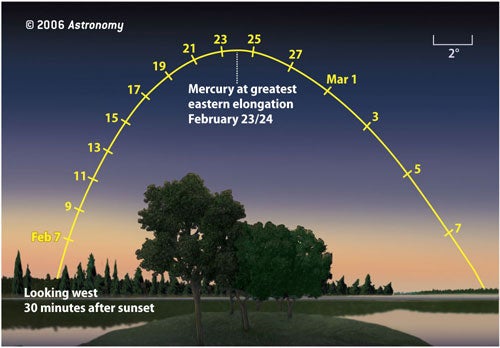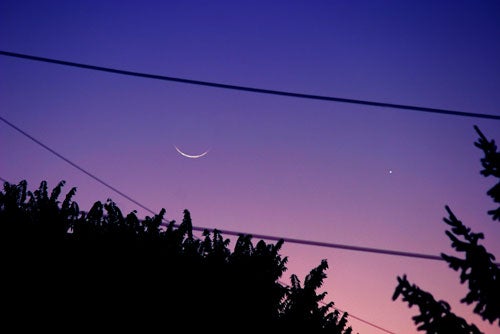The best time to see Mercury this year is right now. Mercury will brighten as an evening “star” in the western sky until it reaches greatest eastern elongation — when the planet is as far east of the Sun as it can get. The evening of February 23 should provide the best view of Mercury as it shines at –0.5 magnitude, which makes it the second brightest object in the evening sky after the star Sirius.
Not only does Mercury appear bright in the sky at greatest elongation, but the closest planet to the Sun also rises to its highest point in the sky. At greatest elongation, Mercury reaches a maximum of 18° above the horizon February 23 and 24. [For comparison, your closed fist held at arm’s length spans 10°.] After February 24, the planet dims nightly. On March 1, it glows at magnitude 0.3.
Mercury’s orbit
Mercury orbits the Sun at an average distance of only 36 million miles (58 million kilometers). Earth is nearly 3 times as far, so, from our perspective, Mercury always stays near the Sun.
Through a telescope
Through a telescope, observers will watch Mercury go through phases similar to the Moon’s. On February 8, the planet’s disk was more than 90-percent illuminated. At greatest elongation, Mercury’s disk will appear half-lit, and it will shrink to a 23-percent-illuminated crescent by March 1.
Most observers detect no surface markings on Mercury. It takes a seasoned observer and excellent atmospheric conditions to see anything at all on the planet, even through the largest amateur telescopes. Experienced amateurs, however, have recorded dusky markings and occasional bright areas on the planet.











